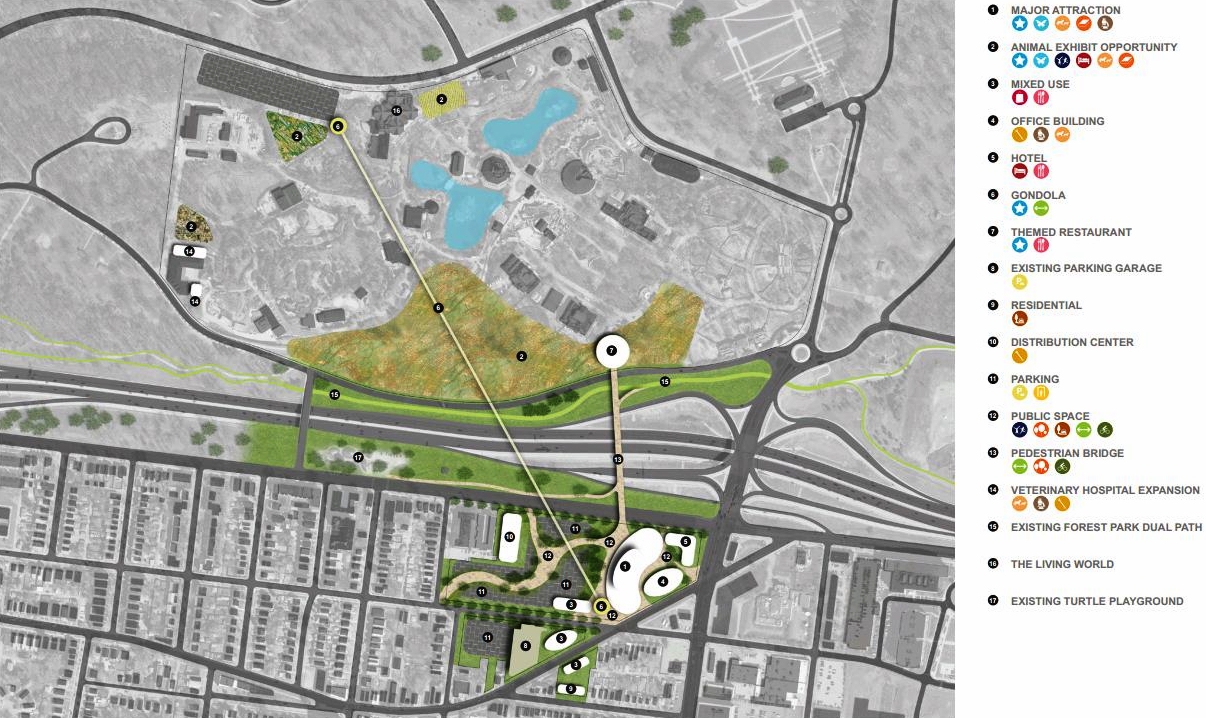
The St. Louis Zoo took a big step toward a new future yesterday as the Zoo Commission approved a framework plan that will guide development over the coming decades. The overall plan is identical to what we detailed in May. The Forest Park Hospital site could see a zoo-themed hotel and a major new zoo attraction. A pedestrian bridge and aerial gondola would cross I-64 and the south parking lot would be removed and become additional animal habitat. Next, the zoo must update its strategic plan and facilities master plan.
The final Expansion Framework Plan, released following the commission’s approval, provides a wealth of interesting additional information about the framework plan and the information used to create the zoo’s vision. The plan is organized by focusing on four core goals: “attract”, “enhance”, “connect”, and “support”. The expansion will add 19 acres to the now 106-acre zoo and gives a green light to an ambitious future.
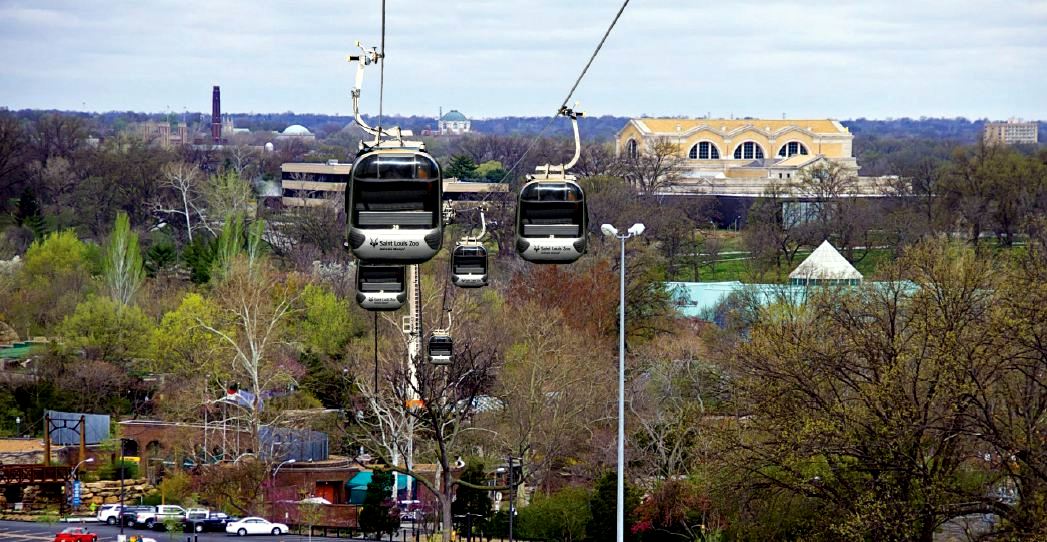
{rendering of gondolas over I-64 and the south parking lot}
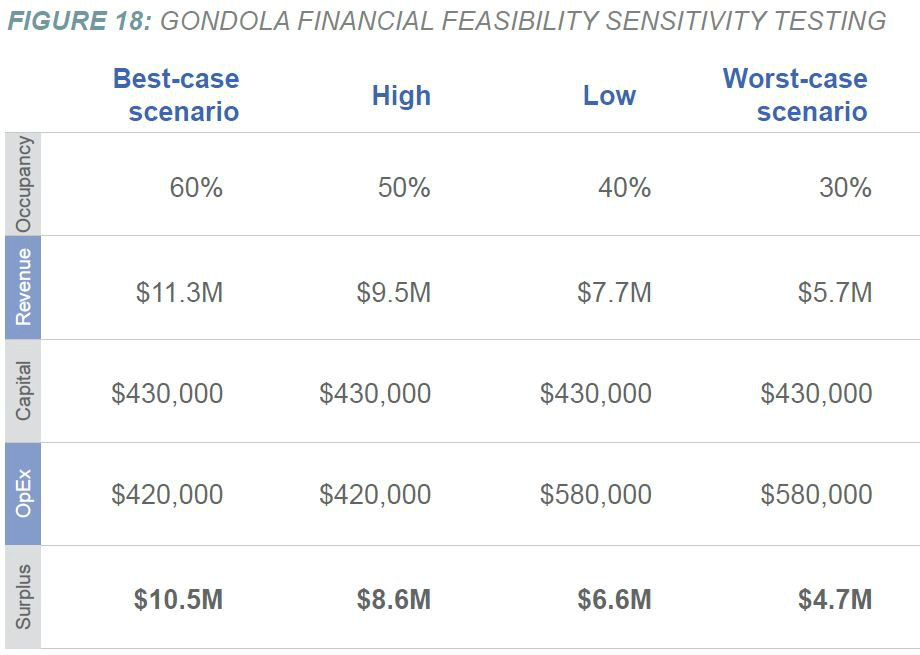 The most obvious change to visitors and passersby if the plan is fully implemented will be a new signature pedestrian bridge and aerial gondola above the Interstate. Why both? A pedestrian bridge can accommodate more users and at a wider range of hours. A bridge connecting to existing Forest Park trails as well as the zoo would be open and free for public use. The cost is estimated at $12M-$15M with no projected revenue.
The most obvious change to visitors and passersby if the plan is fully implemented will be a new signature pedestrian bridge and aerial gondola above the Interstate. Why both? A pedestrian bridge can accommodate more users and at a wider range of hours. A bridge connecting to existing Forest Park trails as well as the zoo would be open and free for public use. The cost is estimated at $12M-$15M with no projected revenue.
The gondola is designed as a new attraction and is predicted to produce a “worst case scenario” of a $4.7M annual surplus (40% occupancy), and as much as $11.3M (60% occupancy). The gondola would make 30 trips daily and operate with 45 6-person cars. The study assumes a $5/person ticket price. Construction cost is estimated at $6M-$7M.
The hotel, architecturally significant signature new attraction and additional dining options are welcome ideas. As I wrote in May, the market studies for the hotel, and possibly retail and residential demand, lack ambition. The plan looks at the nearby Red Roof Inn, Drury, Hampton and Cheshire and concludes the market could support 100-150 additional rooms.
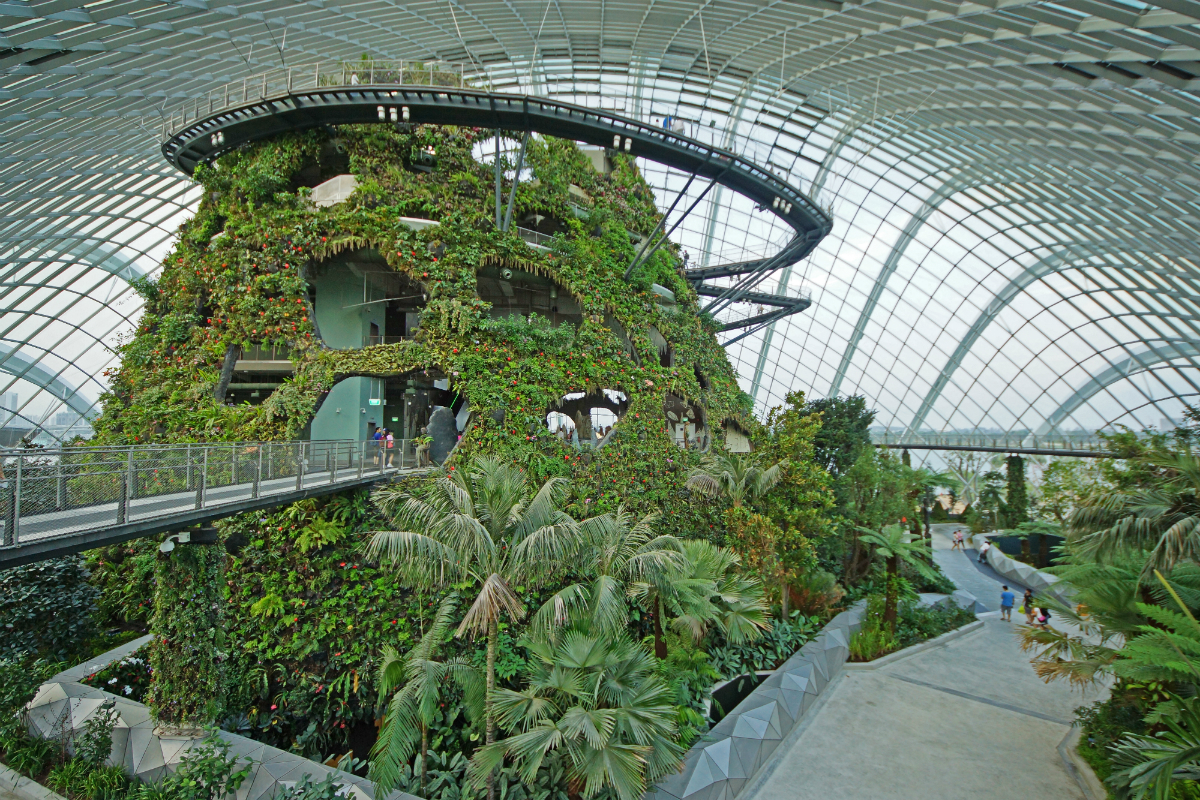
{the new signature attraction could be architecturally significant – Cloud Forest in Singapore}
From May: Here, the Zoo can create a market. Imagine a family staying at the Zoo Hotel, eating in a Rainforest Café (or something of the sort), taking the gondola to the zoo, walking a bit to the art museum and maybe even making their way to the boat rentals at the Boathouse. Maybe they even get there on the bikes they rented to explore Forest Park. It’s easy to imagine a couple days spent without really leaving the park. None of the other hotels can offer anything similar. If part of the goal is to offer a unique experience, this could be a large part of that. And yet market research is telling the zoo that a hotel of only perhaps 100-150 rooms can be supported. Here is where the positive impact of the aggregated plan needs to be recognized. The expansion won’t exist in the market of today, but instead have a big impact on that market, and possibly even create a new one.
Similarly, the opportunity for residential development seems vastly understated. In the immediate area are 200 units at the Lofts at the Highlands and 278 more units at the under-construction Cortona at Forest Park. There is demand enough to get Cortona financed in 2012. By the time any residential at the zoo site would hit the market, the data will have shifted. If 478 new units are absorbed to 5% vacancy in the span of just a couple years, there is clearly demand for more. The current vacancy rate for eight nearby multi-family projects is 5%. The Zoo concludes that just 45-70 residential units are possible.
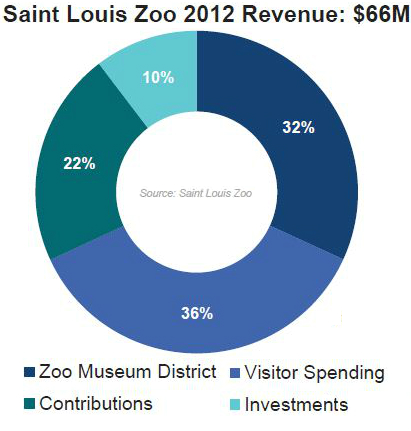 The hotel, restaurants and new attractions are potential sources of net income and with expansion will come more pressure on the bottom line. As a parent of two young children, it can already feel next to impossible to enjoy the zoo for free. You can park and walk, but once inside, the list of pay-to-play is extensive: the children’s zoo ($4), sea lion show ($4), zoo train ($5), stingrays ($4), carousel ($3), 4D motion ride ($4), zoo movie ($3), safari tour ($5) and Wild Wonder discovery room ($2). A $10 day pass covers one visit each, except for the sea lion show, safari tour and Wild Wonder. The gondola will be $5 and hopefully part of a day pass and other pay attractions will likely follow.
The hotel, restaurants and new attractions are potential sources of net income and with expansion will come more pressure on the bottom line. As a parent of two young children, it can already feel next to impossible to enjoy the zoo for free. You can park and walk, but once inside, the list of pay-to-play is extensive: the children’s zoo ($4), sea lion show ($4), zoo train ($5), stingrays ($4), carousel ($3), 4D motion ride ($4), zoo movie ($3), safari tour ($5) and Wild Wonder discovery room ($2). A $10 day pass covers one visit each, except for the sea lion show, safari tour and Wild Wonder. The gondola will be $5 and hopefully part of a day pass and other pay attractions will likely follow.
To keep our “free” zoo feeling a little more free, it may be time to invite the larger St. Louis Metro area to support the Zoo Museum Tax District (ZMD). Even at half the rate of St. Louis County and City, the additional funding could help keep more of the zoo free. Perhaps the initiative should even stipulate as much. When formed in the early 1970s, the ZMD incorporated 62% of metro area residents. Today that number is approximately 46%. Adding St. Charles, Jefferson, St. Clair and Madison counties would raise that to 86%. Short of new, or growing, tax support, visitors should expect more revenue generating attractions.
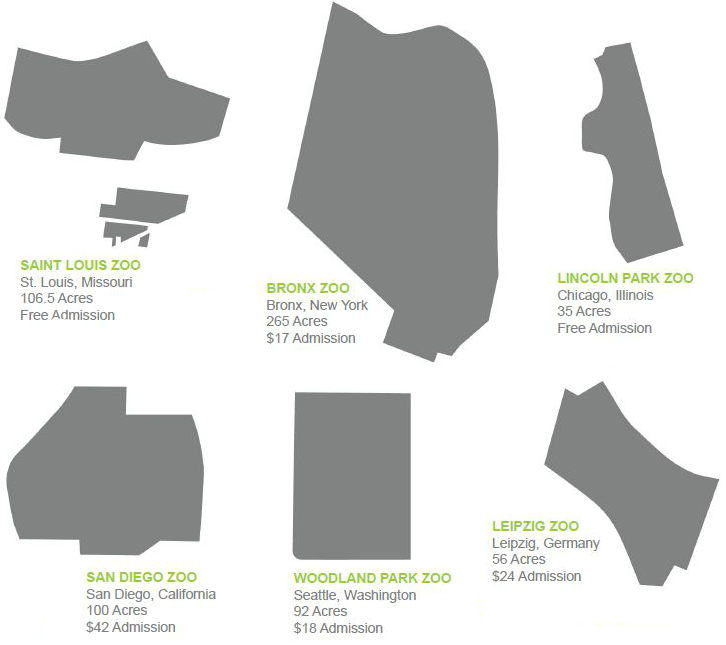
{(not quite to-scale) comparison of the zoo and other zoos admired by St. Louis Zoo leadership}
With the visual appearance is set to change drastically, the visitor experience and traffic circulation will be re-imagined as well. The 953-space south parking lot will disappear, to become additional animal habitat and Wells Drive within the park would be relocated next to the highway. The 476-space north lot would remain, but be focused largely on bus and special needs parking. New parking would consist of up to 2,400 spaces (~1,800 for zoo visitors) and is estimated to cost $12K-$15K per space ($28M-$36M total). Parking for up to 400 daily zoo employees and others is needed as well.
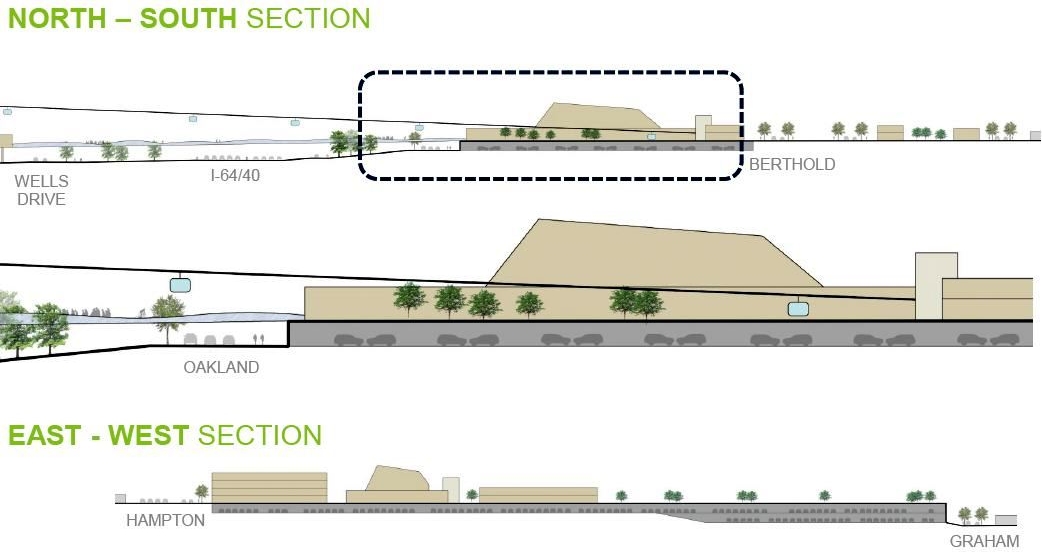
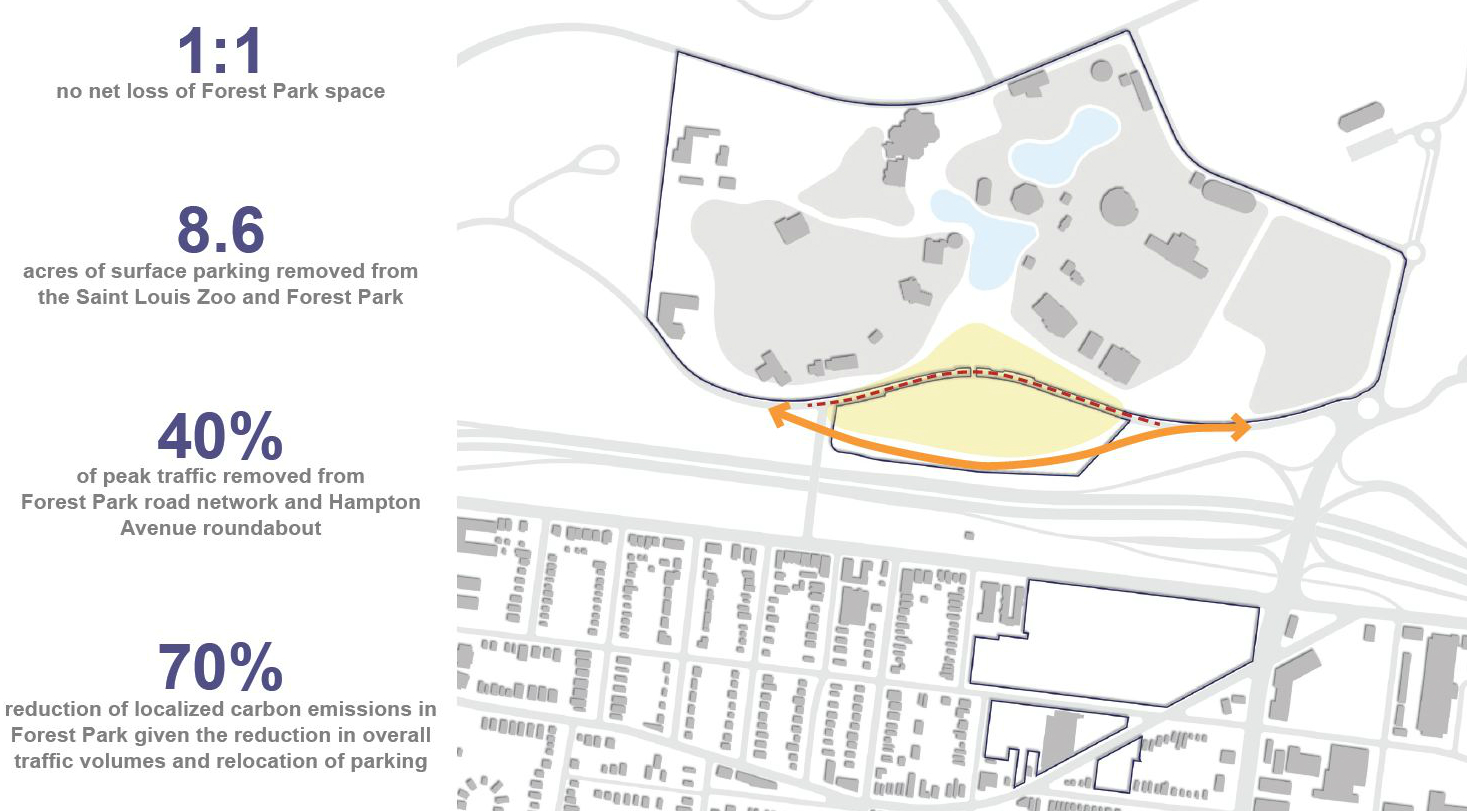
According to the framework plan, fully 60% of Forest Park vehicular traffic enters the park at Hampton Avenue. The second most trafficked entrance is Forsyth at 10%, and others are just 7, 4, 4, 4, 4, 4 and 3%. Placing parking north of I-64 would be aimed at both creating more contiguous exhibit space north of the Interstate and relieving visitor traffic congestion. The plan would remove 8.6 acres of surface parking from Forest Park and is predicted to reduce peak traffic within Forest Park by 40%.
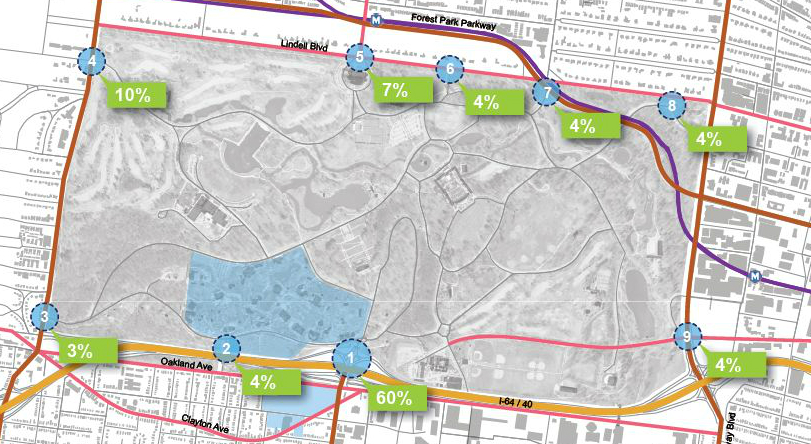
{currently, 60% of traffic entering Forest Park does so at Hampton Avenue}
Oakland Avenue will likely see significant changes in the future as well. The framework plan states that the City of St. Louis is considering narrowing Oakland at the zoo expansion site to two traffic lanes, adding a north side sidewalk and bike lanes in both directions. The plan states that even after a lane reduction, Oakland is not expected to be near capacity. It’s also stated that closing Oakland has been discussed in the past, and although concerns are noted, the plan notes that the zoo could support street closure “through careful design and enhanced connections”.
Berthold Avenue could be drastically altered as its focus becomes serving the zoo expansion site. “consideration should be given to the access and operations of the parking garage and accommodations for both (visitor) pedestrian access to and circulation within the expansion site.” Noting that local drivers dislike the Berthold/Clayton/Hampton intersection, the plan suggests closing the street: “The concept is that Berthold would become an access road to the expansion site or to the existing garage only.”
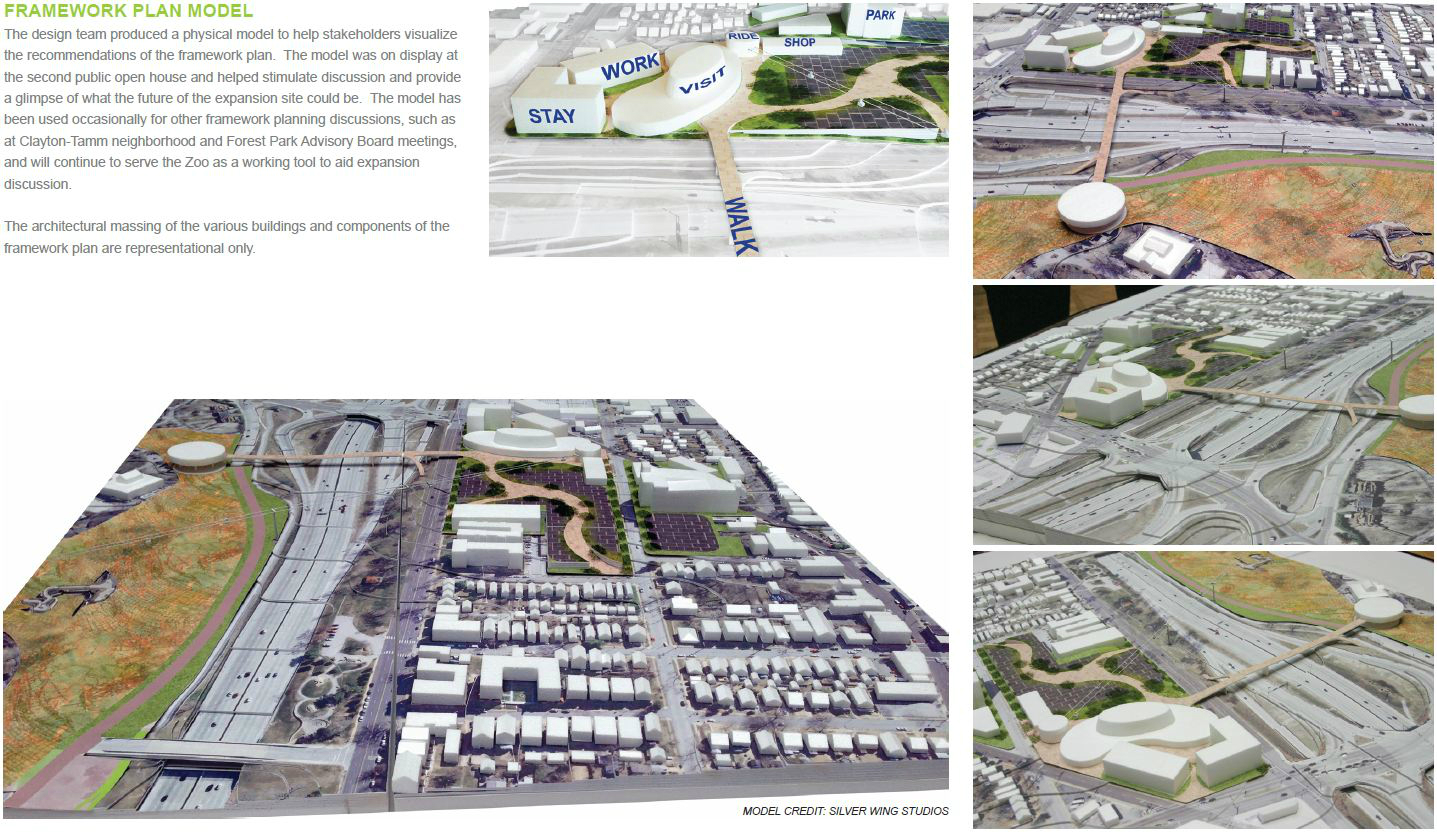

{the physical model give a 3D view of the framework, but doesn’t show closed streets}
The potential street closures are problematic and represent a significant threat to the existing urban fabric of the area. While some may not like particular street configurations and streets may often be well below capacity, the network serves the purpose of keeping the city open and not a series of dead ends and blocked of corners – the suburban pattern. And street closures are more than traffic counts and capacity estimates. There are truly very few streets within the city that couldn’t be closed without having a significant adverse effect on traffic. In fact, we’ve closed 262 streets in the city already, each one resulting in a less-connected, less urban environment. In this case, the concern is that Berthold separates the largest portion of the zoo expansion site from an existing parking garage.
Clayton Avenue would also be targeted for closing immediately next to Hampton. The goal, as stated, would be “increasing the capacity of (Hampton) and, ultimately, benefitting the entire network.” Increasing capacity means increasing vehicle throughput. Closing Clayton west of Hampton likely require a realignment with the short block of Berthold. While reconfiguring streets to eliminate signals may simplify traffic movements, it also concentrates more traffic at fewer intersections. Closing Clayton and Oakland at Hampton would make this part of Hampton a virtual I-64 on-ramp and not part of the city at all.
The planned changes to the zoo appear transformative. There is a lot of potential, big and small; the strip of Forest Park north of I-64 could be reinvigorated and meld with Turtle Park, the addition of retail could make Dogtown a more walkable neighborhood, and revenue generating attractions could secure the financial future for the zoo. Whatever’s coming should add significantly to the zoo as an attraction. The trick will be transforming the zoo without negatively transforming the city.
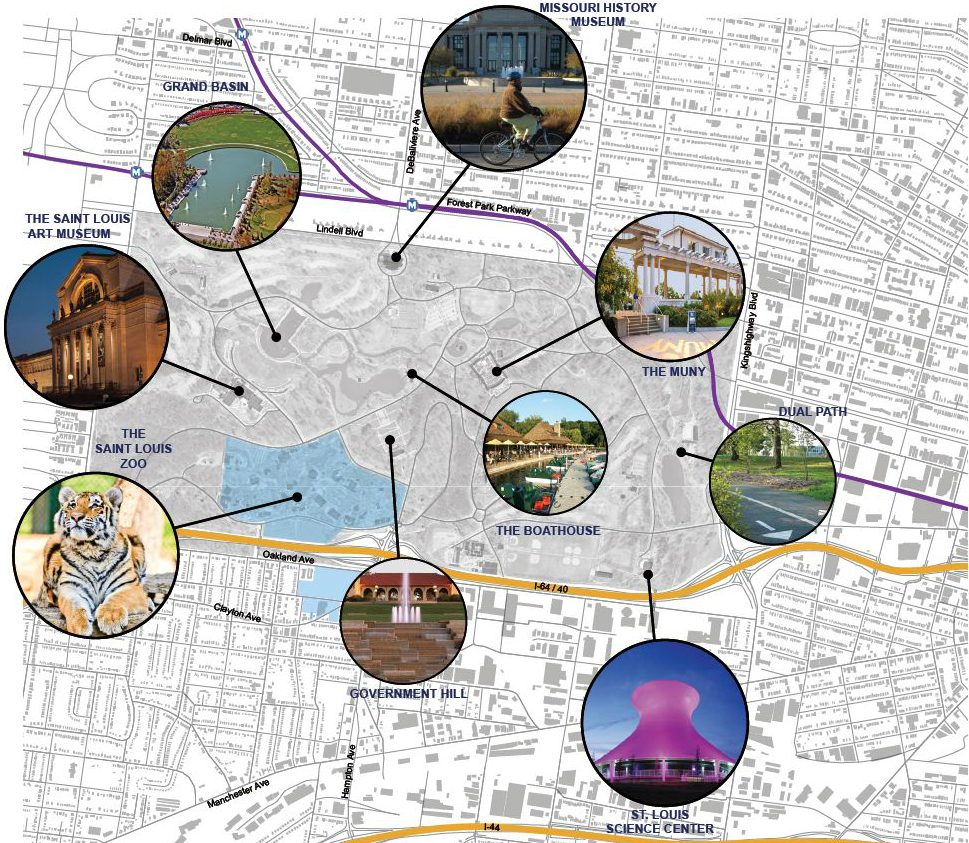
{for the unitiated, Forest Park is home to many of the region’s top attractions}
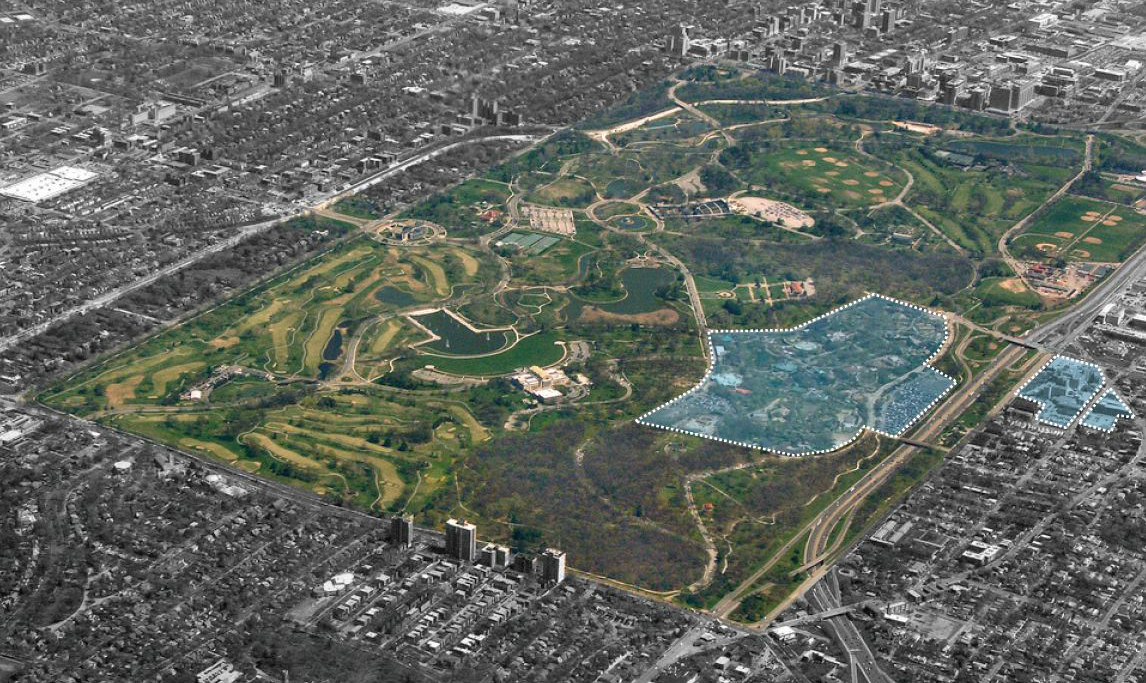
{the Zoo in relation to Forest Park}
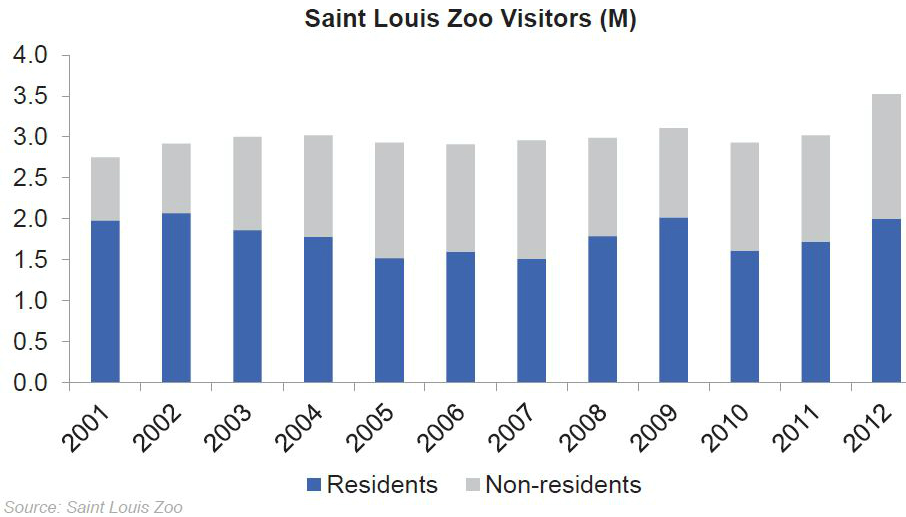
{the Zoo attracted 3.5M visitors in 2012, the expansion could result in a 25% increase}
St. Louis Zoo Expansion Framework Plan (2013) by nextSTL.com

